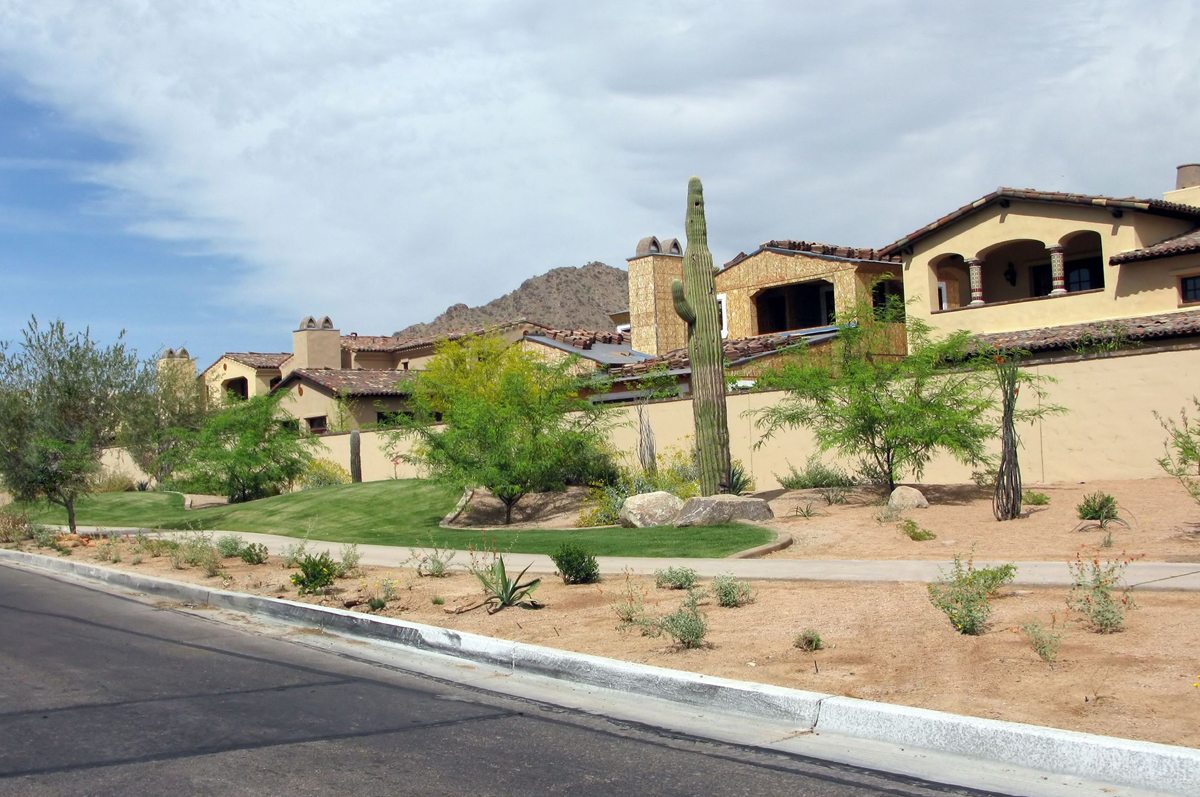The Phoenix area could soon see another shortage of homes for sale, like the one it endured from 2012 to 2013. According to a new report from the W. P. Carey School of Business at Arizona State University, very weak demand is masking the fact that relatively few homes are coming onto the market for sale. The area only recently emerged from another shortage, when buyers had to battle each other for relatively few home options.
Here are the latest details about Maricopa and Pinal counties, as of May:
* The median single-family-home sales price was $205,000, almost unchanged for three months in a row.
* Activity in the market is extremely slow, with demand down around 20 percent from last May.
* This quietness is covering up the fact that the market’s supply of homes for sale has stabilized at about 10 percent below normal, which could lead to another shortage, if demand eventually picks up.
Phoenix-area home prices quickly rose from September 2011 to last summer, before slowing down and even dropping a little earlier this year. The median single-family-home sales price was $205,000 in May, about the same as it was in April and March. However, that’s still up about 11 percent from the median of $185,000 last May. Realtors will note the average price per square foot went up 6 percent year-over-year. The median townhouse/condo price went up 4 percent.
The market has now become extremely quiet, and further price increases are unlikely this year without some growth in demand. The amount of single-family-home sales went down 19 percent from last May to this May. Sales of townhomes and condos dropped 20 percent.
“Demand has been much weaker since July 2013,” says the report’s author, Mike Orr, director of the Center for Real Estate Theory and Practice at the W. P. Carey School of Business. “The slight recovery in demand that had been developing over the last two months dissipated again in May. While move-up homeowners and second-home buyers are starting to compensate for the departure of investors who went to other areas of the country for better bargains, activity by first-time home buyers is still unusually slow.”
Orr says some home sellers even appear to be canceling their listings and waiting for another time when buyers have a greater sense of urgency. These families are: 1.) choosing to stay in their homes longer than they did 10 to 15 years ago; 2.) possibly stuck with negative or little equity in their homes, discouraging buying or selling; and/or 3.) wanting to stay in their current homes to preserve their very low mortgage interest rates.
That means the market’s short supply of homes isn’t expected to get much bigger in the near future. Though the supply of active listings went up 69 percent from June 1, 2013 to this June 1, it basically stabilized at about 10 percent below normal. Completed Phoenix-area foreclosures were down 50 percent from last May to this May, eliminating another possible significant source of supply. This could lead to another shortage like the recent one when we saw 95 offers on a single home.
“Between 2012 and 2013, we experienced a chronic housing shortage in Greater Phoenix,” explains Orr. “This shortage has just been temporarily masked by unusually low demand, but that could change at any time. The market has plenty of pent-up demand.”
Orr points out that population and job growth have recovered faster in the Phoenix area than home construction has. The level of single-family-home construction permitting remains very small by historic standards, and single-family new-home construction and sales remain about 65 percent below normal. One bright spot is Pinal County, where new-home sales went up 22 percent from last May to this May.
Meantime, multi-family construction permits and rental-home demand remain strong in the Phoenix area. Unemployment, falling birth rates and greater home-sharing are helping to drive this demand. The supply of single-family homes available for rent was down to 32 days on June 1. The fast turnover and low vacancy rates have already pushed rent up in the most popular locations.
Orr adds, “In Maricopa County, the percentage of properties purchased without financing in May was still at 25 percent. The normal range for cash buyers is only 7 to 12 percent, so mortgage lending still has a long way to go toward recovery.”
Orr’s full report, including statistics, charts and a breakdown by different areas of the Valley, can be viewed and downloaded at www.wpcarey.asu.edu/realtyreports. A podcast with more analysis from Orr will also be available from knowWPCarey, the business school’s online resource and newsletter, at http://knowwpcarey.com/index.cfm?cid=13.




